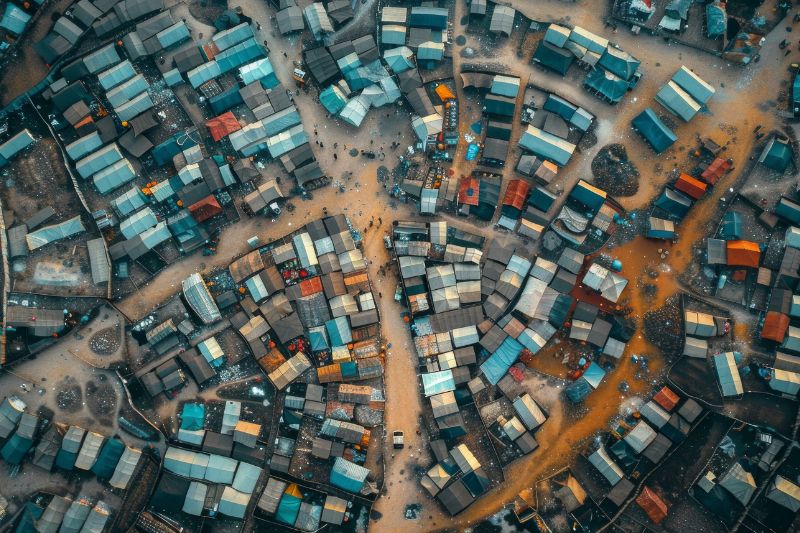A good understanding of the difference between asylum and refuge is essential to make informed decisions and avoid mistakes that complicate an already difficult and uncertain path. It is a crucial issue for any person who is forced to leave his or her country in search of a better life. international protection.
Although often used synonymously, they actually have different legal meanings and separate processes that can change the course of the applicant's life.
Like migrant who has had to leave his homeland, I can say that the confusion between these two figures is not only common, but dangerous.
When you flee out of fear, there is often no time to understand the legal details, but these details are what determine whether you will be able to build a new future with security and dignity. That's why we want to explain it to you simply and completely.
Why is it important to know the difference?

To know the difference between asylum and refuge is not only a legal matter, but a tool for survival.
Many people who flee of persecution, violence or war are unaware of their rights or the real options for protection.
Not knowing which of these avenues they can access, they make mistakes such as presenting the request in the wrong place or not meeting the documentation necessary.
The result can be devastating, rejection of the application, deportation, or years of waiting in an immigration detention center. legal limbo. Therefore, understanding the difference between asylum and refuge is essential not only to plan the exit from a dangerous country, but also to start again in another one with the best possible guarantees.
Difference between asylum and refuge: basic definition
The difference between asylum and refuge is fundamental to understanding the options for international protection available to those fleeing their country.
Although both seek to provide security to persecuted or threatened persons, there are clear differences in where they are requested, who grants them and how they are handled.
The asylum is a form of protection which is requested when the person has already arrived in the country of destination or is at the border. For example, someone escaping from political persecution and manages to reach Spain o States United can seek asylum there.
In this case, the application is filed directly with the immigration authorities The process is individualized and occurs within the receiving country, which will evaluate the evidence, testimony and credibility of the fear of persecution. This process is individualized and occurs within the receiving country.
The shelterInstead, it is a process that is initiated and managed by the outside the country's territory host country. It is usually coordinated by international organizations such as UNHCR or through resettlement.
Displaced persons are usually located in a third country, often in a country of origin. refugee campswhere your situation is evaluated before you are authorized to be admitted. safe transfer y legal to the host country.
A clear example to illustrate the difference between asylum and refuge is that of a family fleeing the war and living in a camp in a neighboring country.
They cannot arrive directly in the country of destination by their own means, but wait to be selected and transferred with refugee statuswith all the necessary documents to start in a safe and stable way.
In summary, the difference between asylum and refuge is that the asylum is a right which is requested upon arrival at the destination, while the shelter is a form of protection managed before traveling, offering a planned and safe transfer.
Understanding this difference is not only a legal issue, but a vital tool for those seeking to save their lives and rebuild them with dignity.
Real examples
To illustrate the difference between asylum and refugeLet's think of real examples:
- Asylum: A physician Venezuelan denounces the lack of supplies and preventable deaths in a hospital. After his statements, he receives threats from groups and is fired. He manages to travel to Peru and from there requests asylumHe has submitted copies of his complaints, letters from colleagues and threats received as evidence. While your case is being analyzed, you have the right to remain in Peru with a provisional permit.
- Shelter: A family Venezuelan years in a shelter in Colombia after fleeing violence and humanitarian crisis. UNHCR studies their case and applies them for a resettlement program in Argentina. They travel already with recognized refugee status and receive residence and support for integration upon arrival.
Some mistakes you should not make
Many people confuse or simplify the difference between asylum and refuge and this leads to serious errors:
- Believing that they can be ordered in the same way anywhere.
- Assuming that it is enough to say "fear" to obtain protection without proving anything.
- Do not prepare evidence ni documents that accredit the persecution.
- Failure to inquire about deadlines and requirements of the destination country.
These mistakes can result in the denial of the application and the obligation to return to a dangerous country. That is why understanding the difference between asylum and refuge is not a luxury, but a necessity.
Legal processes to apply for asylum or refugee status

The difference between asylum and refuge is very evident in legal proceedings:
The asylum process
- The person requesting asylum in the host country or at its border.
- Must demonstrate persecution on the basis of race, religion, nationality, membership of a particular social group or political opinion (know the model letter of political asylum)
- The process includes interviews, exams from documentation y hearings.
- The immigration authorities of the host country make the decision.
The asylum seeker You are often alone, without networks or support, in a new country where everything is strange and the laws are complex. That is why it is so important to be clear about what you are asking for and how.
The refugee process
- The person request shelter from outside the country host country, generally in a third country or in a camp.
- The case is being evaluated with the help of international organizations such as UNHCR.
- Receiving countries agree to resettle selected persons.
- The resettlement usually guarantees safe travel and the granting of residency from the outset.
Here, the difference between asylum and refuge is that the shelter is usually safer and more planned, but also slower and with limited quotas.
Who grants it?
An essential aspect of the difference between asylum and refuge is the final decision maker.
- Asylumis granted directly by the State receiverthrough their immigration or justice services. Each country has its own laws, requirements and waiting times.
- Shelteris managed with participation international organizations, but the final decision is also made by the State who undertakes to resettle the person.
In other words, both involve the acceptance of the State receiverbut the shelter involves a international coordination previous, while the asylum is a right which is claimed individually upon arrival.
Rights of persons granted asylum or refuge

In addition to the process, the difference between asylum and refuge does not usually translate into radical differences in basic rights:
- Protection against deportation or refoulement.
- Access to housing, education, health.
- Possibility to work legally.
- Right to family reunification in many cases.
- On the road to permanent residence or citizenship, depending on the country.
The real difference between asylum and refuge lies in how these rights are accessed and how the protection is managed, rather than in the content of the protection itself.
Practical advice for those seeking international protection

If you are thinking about migrate to protect your life or the life of your family, these tips can help you better understand the difference between asylum and refuge and to choose the right path:
- Be well informed: consult official sources, international organizations and free or low-cost legal services.
- Prepare your storyThe following is a detailed account of the facts of the persecution, dates, places, people in charge.
- Gather documents: complaints, threats, photos, news, any evidence to support your case.
- Expert consultationImmigration lawyers or humanitarian aid agencies are familiar with local requirements.
- Be honest and consistentDon't exaggerate or make up details. Inconsistencies often lead to rejection.
To know the difference between asylum and refuge allows you to better plan for your future and reduce risks at such a delicate time in life.
It is not just a legal term or an administrative procedure. It is the line that separates extreme vulnerability from the possibility of rebuilding a dignified and safe life.
For those of us who have had to leave behind everything we know, every detail counts, the fear, the nostalgia, the hope.
Knowing this difference is a way to take control in the midst of chaos, to plan for the future and to find some certainty in the midst of uncertainty.
At CuriaraWe know what it means to leave home to seek protection. Leaving those such spectacular places in VenezuelaIts beaches, its food, its traditions... we know how hard it is to start over in a foreign land. That's why we want you to be clear about what difference between asylum and refugeso that you can make informed decisions and take the first step towards a more stable and dignified future, knowing that there are always ways of help and solidarity.
